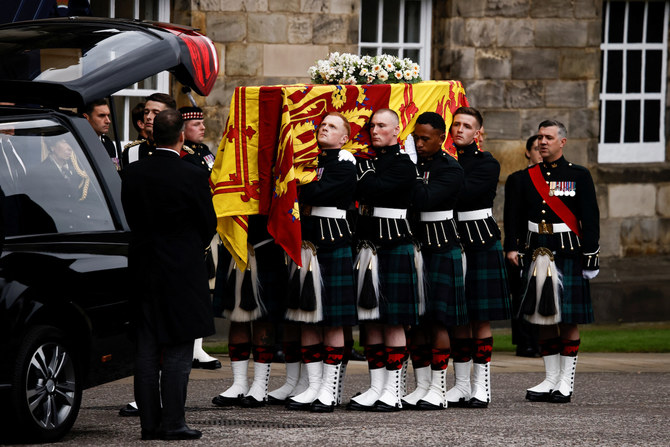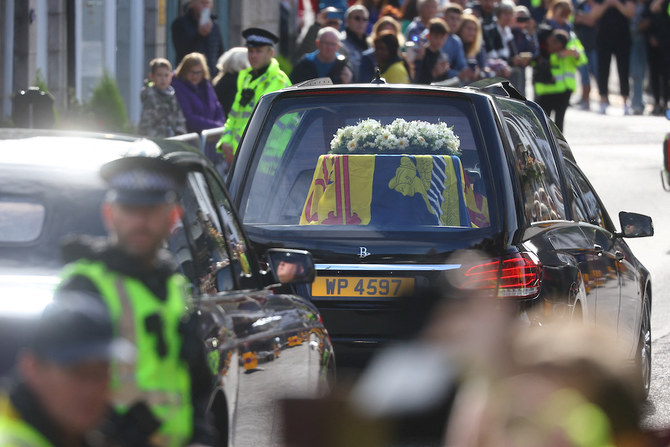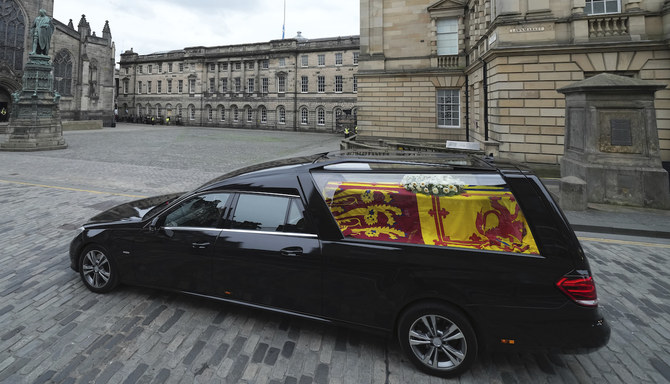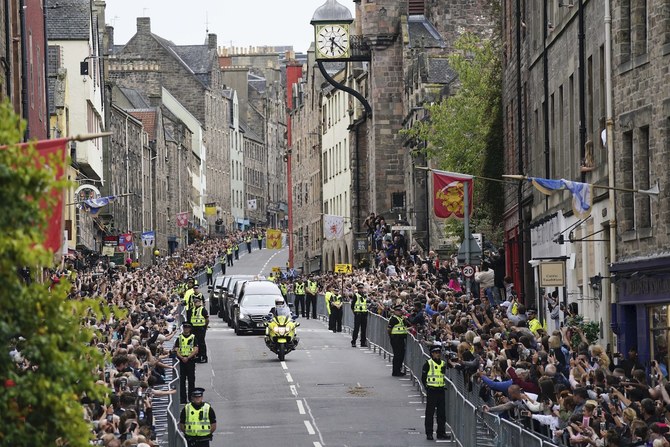EDINBURGH: Queen Elizabeth’s coffin arrived in Edinburgh on Sunday after a six-hour journey from her summer home in the Scottish Highlands, past tens of thousands of mourners lining the route, many in somber silence, some applauding and others in tears.
Shortly after 10 a.m. (0900 GMT), a hearse carrying Elizabeth’s oak coffin emerged from the gates of Balmoral Castle, where she died on Thursday aged 96, at the start of a slow drive to the Scottish capital.
The coffin was draped in the Royal Standard of Scotland with a wreath on top made of flowers taken from the Balmoral estate including sweet peas, one of Elizabeth’s favorites.
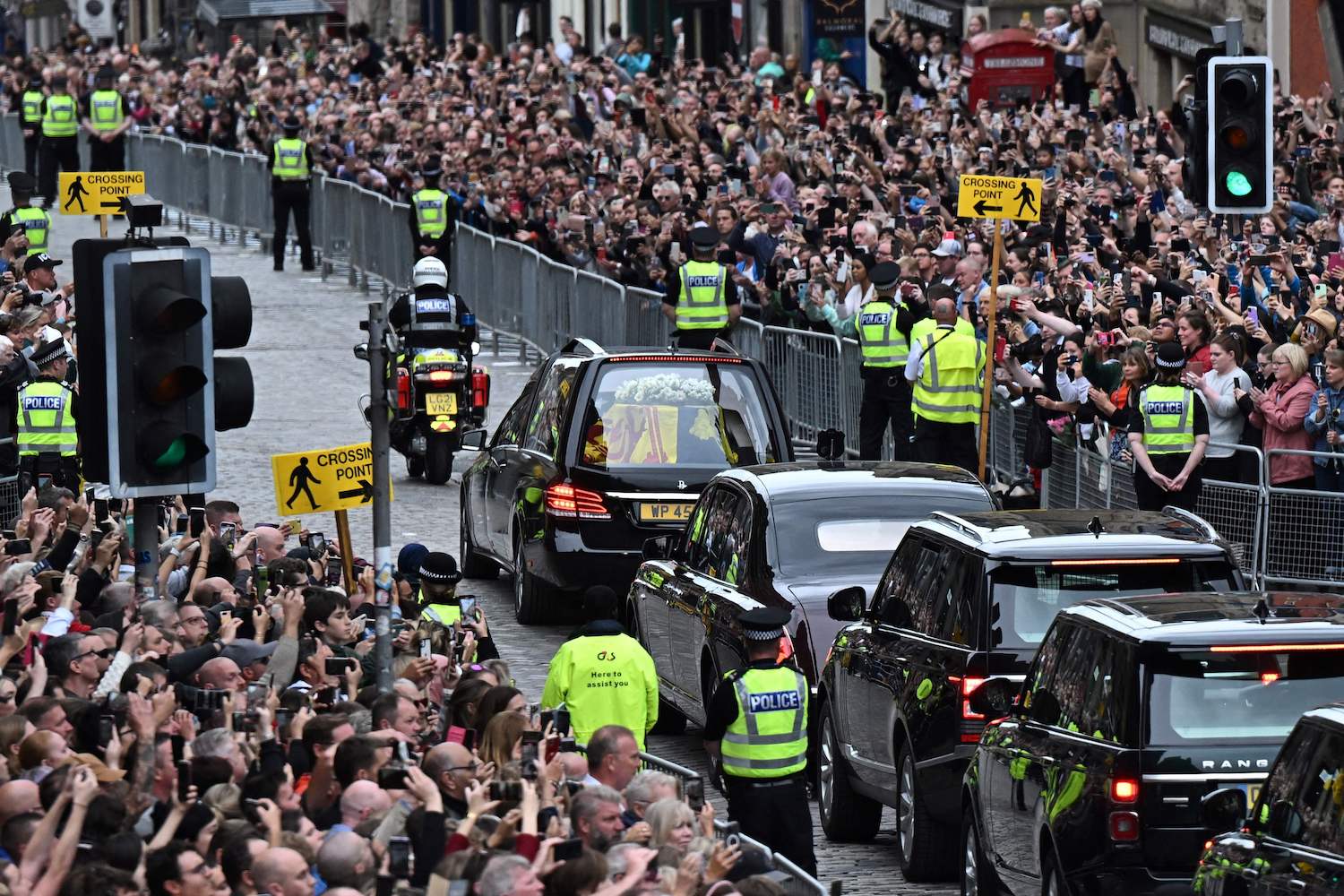
Members of the public watch the hearse carrying the coffin of Queen Elizabeth II, draped in the Royal Standard of Scotland, as it is driven through Edinburgh towards the Palace of Holyroodhouse, on September 11, 2022. (AFP)
Crowds, fifteen deep in places, massed in the center of Edinburgh to greet the cortege, which included the queen’s daughter, Princess Anne, as it made it way to the Palace of Holyroodhouse where it was met by a military guard of honor.
Soldiers from the Royal Regiment of Scotland then carried the coffin to the throne room of the palace where it will remain overnight.
“There was no way I could miss this. I would regret it for the rest of my life,” said Eilidh Mackintosh, 62, who left her home at 6 a.m. to be sure of a good view on Edinburgh’s famous Royal Mile where large crowds were gathering.
“She never let us down and I didn’t want to let her down either. Now she has gone there is a big hole in the heart of the nation.”
The journey from Balmoral was the first of a series of events leading up to the state funeral at Westminster Abbey in London on Sept. 19.
In an emotional tribute to his mother on Friday, the new monarch, King Charles, said she had begun a “last great journey” to join Prince Philip, her husband of 73 years who died last year.
Her death has drawn tears, sadness and warm tributes, not just from the queen’s own close family and many in Britain, but also from around the globe — reflecting her presence on the world stage for seven decades.
Wherever the cortege went as it wound its way through picturesque countryside, villages, small towns and cities, people lined the road or stopped their cars to get out and watch. At one point, it passed a guard of honor formed by dozens of tractors lined up in adjacent fields by farmers.
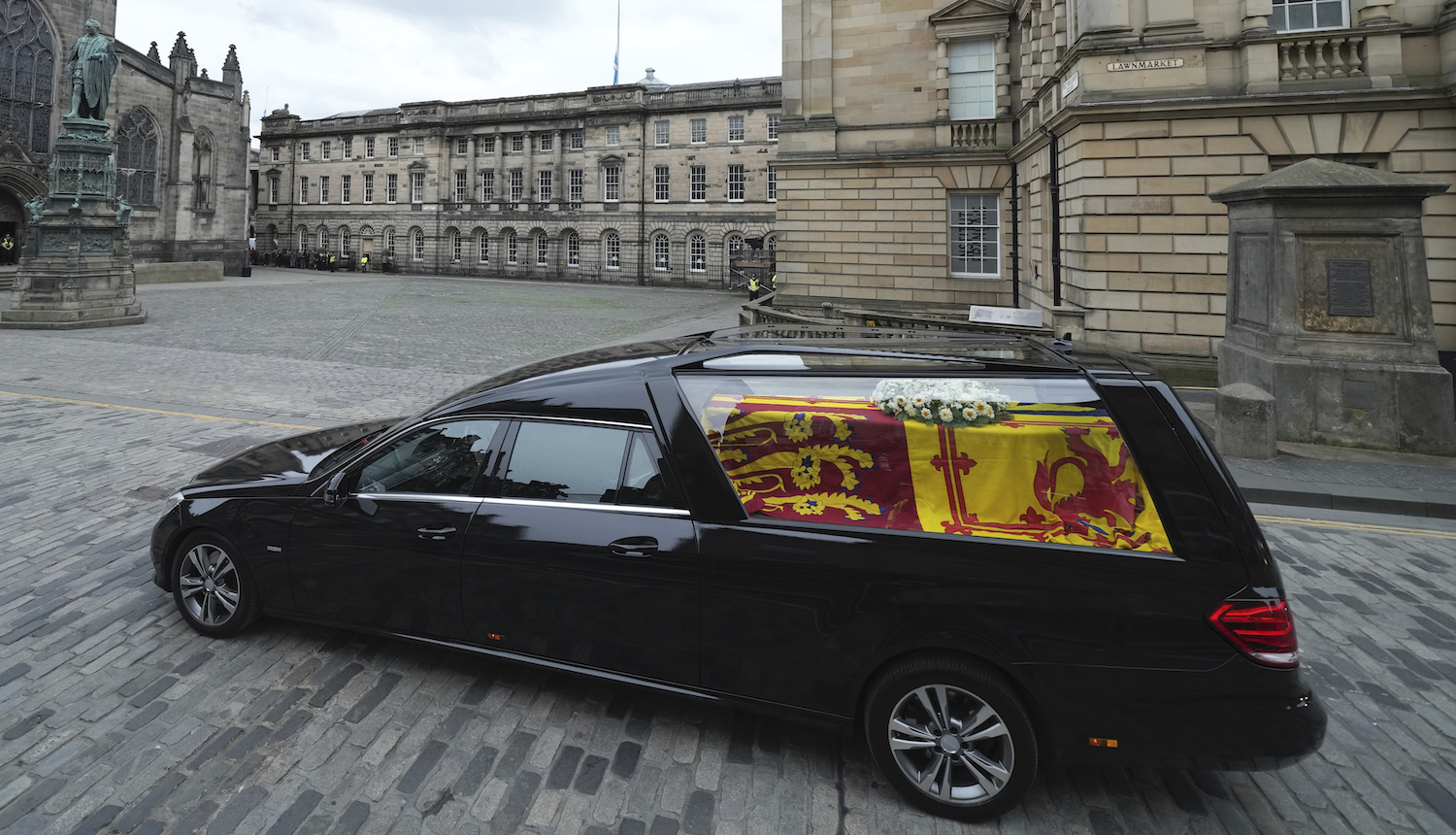
The Queens cortege with the hearse containing her coffin passes the St. Giles Cathedral as it makes its way down the Royal Mile in Edinburgh, Scotland, Sunday, Sept. 11, 2022. (AP)
Many watched silently in bright sunshine. Some threw flowers into the road. For others, the emotion of the moment moved them to tears. “It’s just very, very sad. I’m happy I was here to say our goodbyes,” said Elizabeth Alexander, 69, who was born on the day the queen was crowned in 1953.
Many thousands are continuing to gather at other royal palaces across Britain, and large piles of flowers are massing as people visit to pay their respects.
Charles became king immediately after his mother’s death and was officially proclaimed the new monarch at a ceremony on Saturday, full of pageantry and centuries-old traditions.
Similar proclamations are following across the United Kingdom and the other 14 realms of which Charles is now head of state, including Australia, Canada, Jamaica, New Zealand and Papua New Guinea.
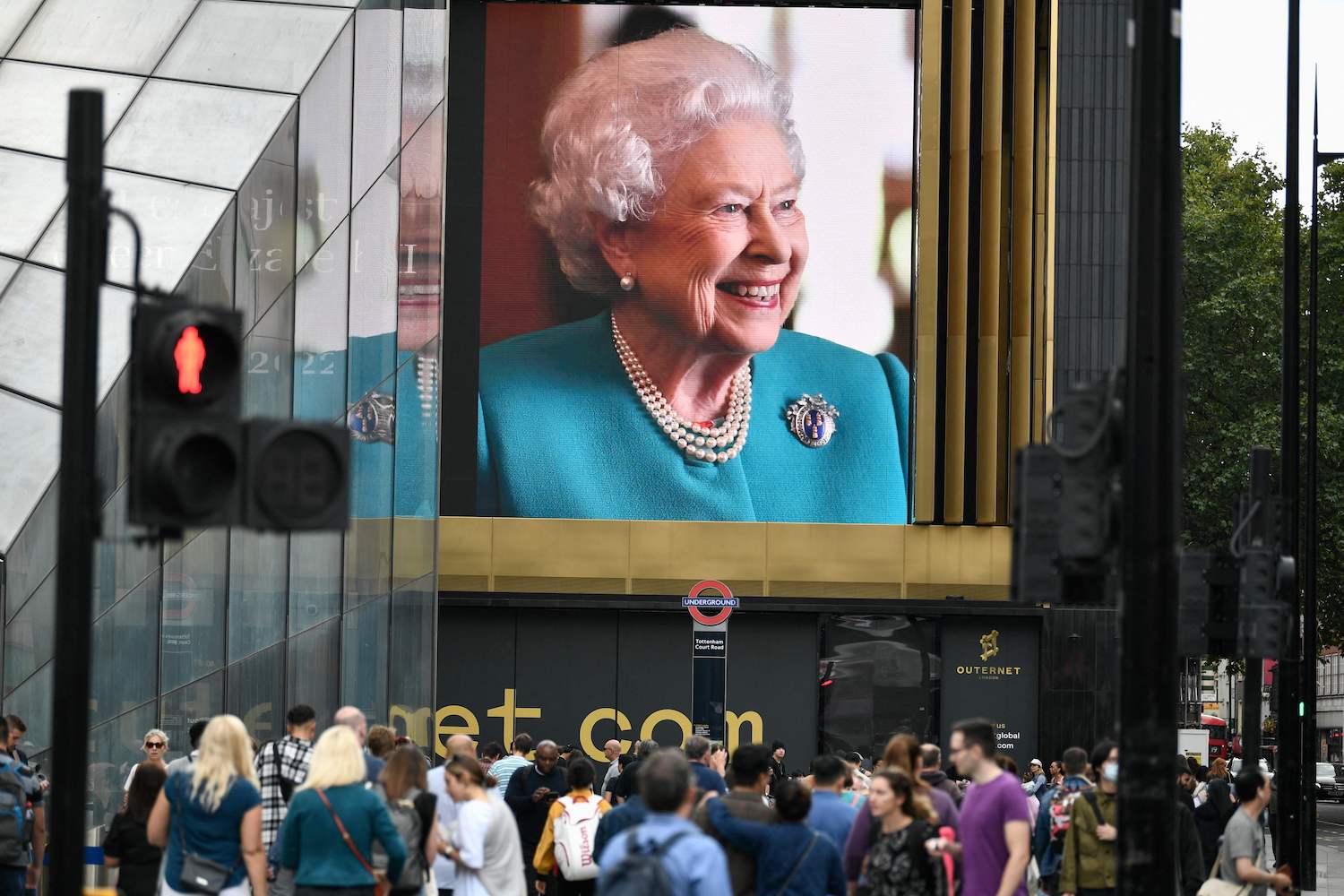
Pedestrians walks past a portrait of Britain's Queen Elizabeth II on a street in London on September 11, 2022. (AFP)
Canada’s Prime Minister Justin Trudeau said parliament would be recalled on Thursday to allow members to pay tribute.
The queen came to the throne following the death of her father King George VI on Feb. 6, 1952, when she was just 25. Her coronation took place a year later.
While Elizabeth’s death was not totally unexpected given her age and deteriorating health, there was still a sense of shock at the news.
“We all thought she was invincible,” her grandson Prince William, now the heir to the throne, told a well-wisher on Saturday as he met crowds at Windsor castle.
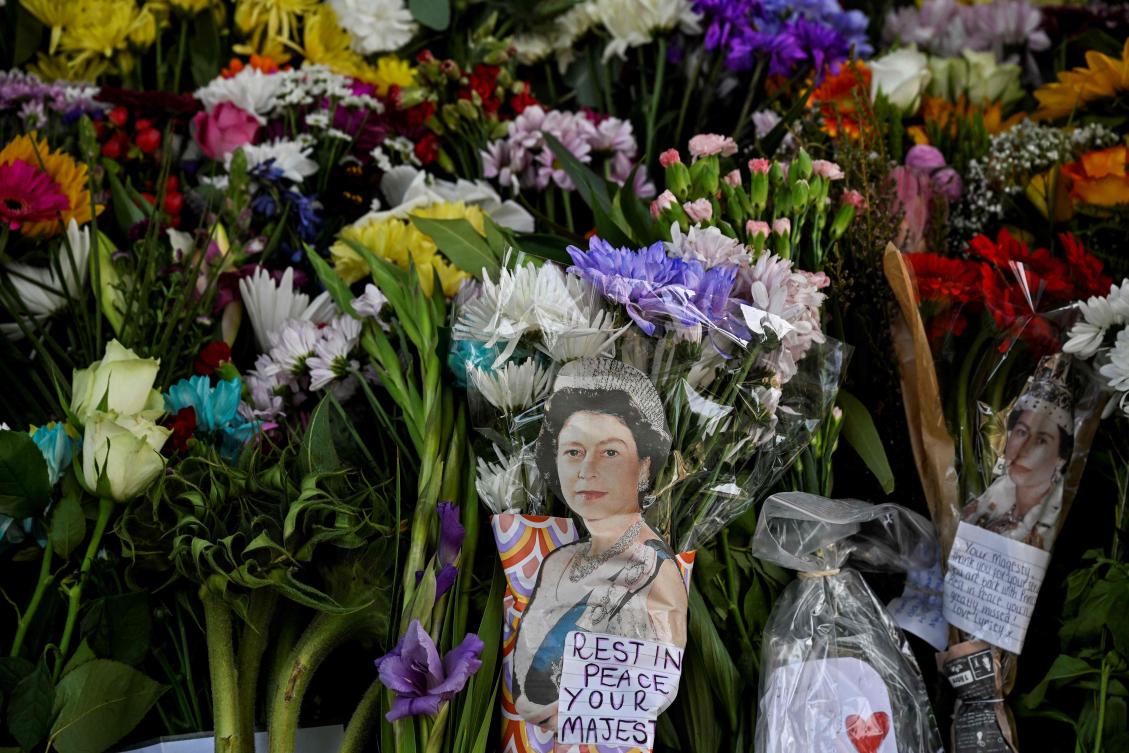
Flowers and pictures of the late Queen Elizabeth II are placed outside of the Palace of Holyroodhouse in Edinburgh on September 11, 2022. (AFP)
The day of Elizabeth’s funeral will be a public holiday in Britain, officials have announced. US President Joe Biden said he would be there, although full details of the event and the attendees have not yet been released.
Before that, her coffin will be flown to London and there will be a somber procession when it is later moved from Buckingham Palace to Westminster Hall where it will lie in state for four days.
“It goes without saying that we can expect large numbers of people,” a spokesperson for Prime Minister Liz Truss told reporters.
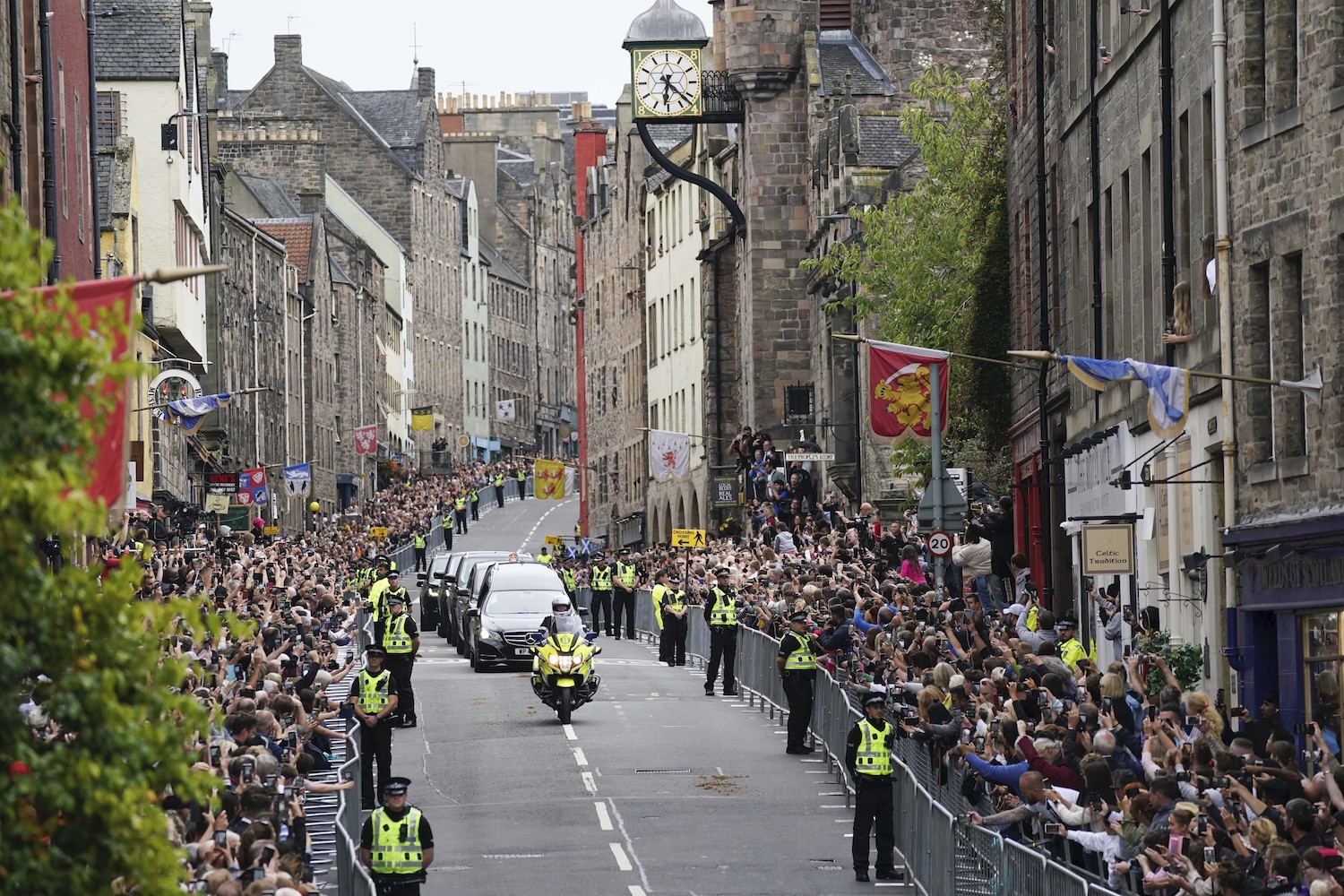
The hearse carrying the coffin of Queen Elizabeth II passes along Canongate towards the Royal Mile as it completes its journey from Balmoral to the Palace of Holyroodhouse in Edinburgh. (AFP)
Truss, whose appointment as prime minister on Tuesday was the queen’s last public act, will join King Charles as both the new head of state and prime minister tour the four nations of the United Kingdom in the next few days.
Charles, 73, is now the 41st monarch in a line that traces its origins to the Norman King William the Conqueror who captured the English throne in 1066.
Elizabeth’s death has capped a difficult couple of years for the royal family.
The most high-profile issue has involved her grandson Prince Harry and his wife Meghan, who stepped down from royal life in 2020 to move to California from where they both have heavily criticized the institution.
That has left them alienated from the rest of the family, with Harry and his older brother William said to be barely on speaking terms. But the death of their grandmother has seen differences put aside, as they appeared together with their wives outside Windsor Castle to meet the crowds on Saturday.
A royal source described it as an important show of unity at an incredibly difficult time for the family.


